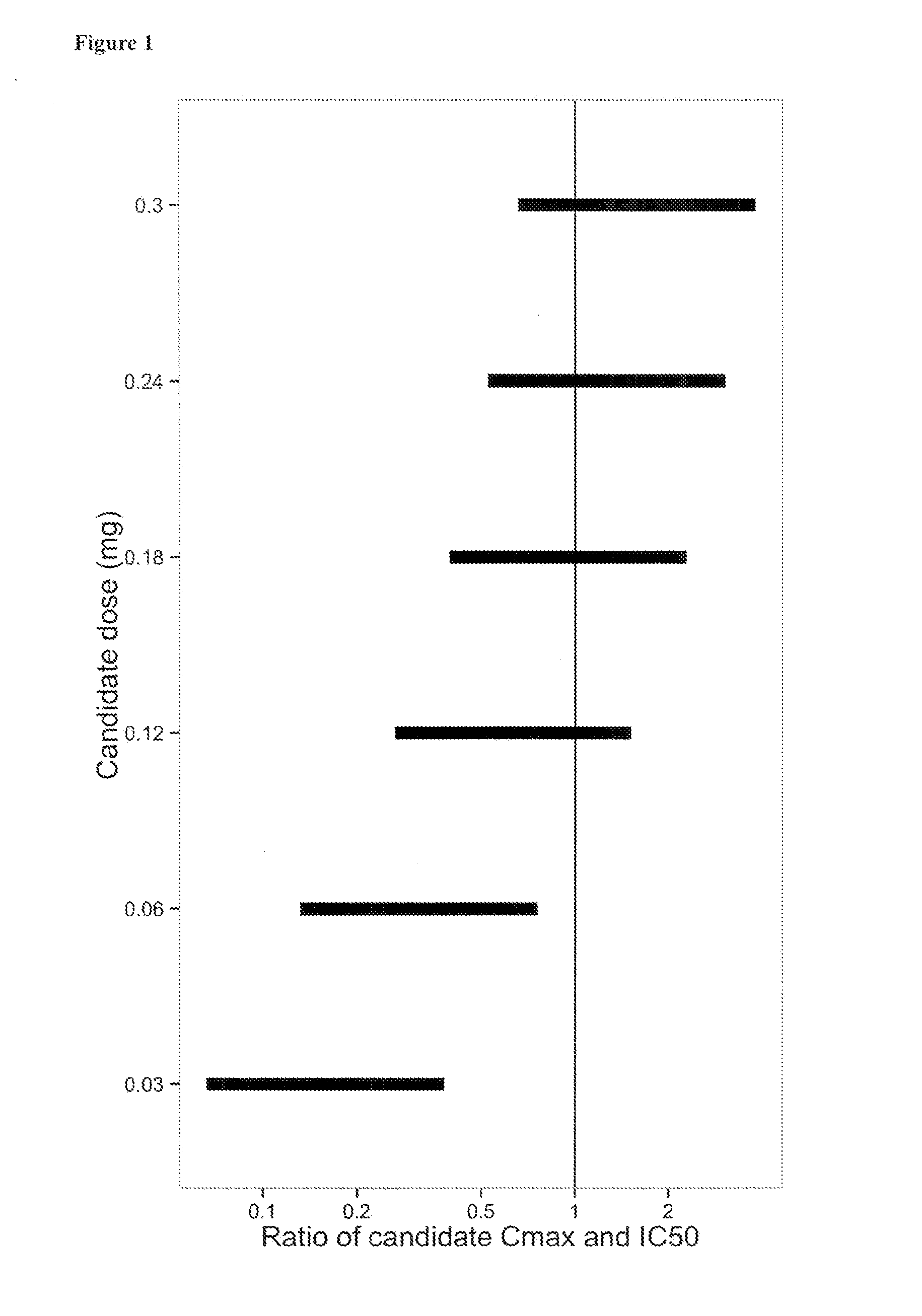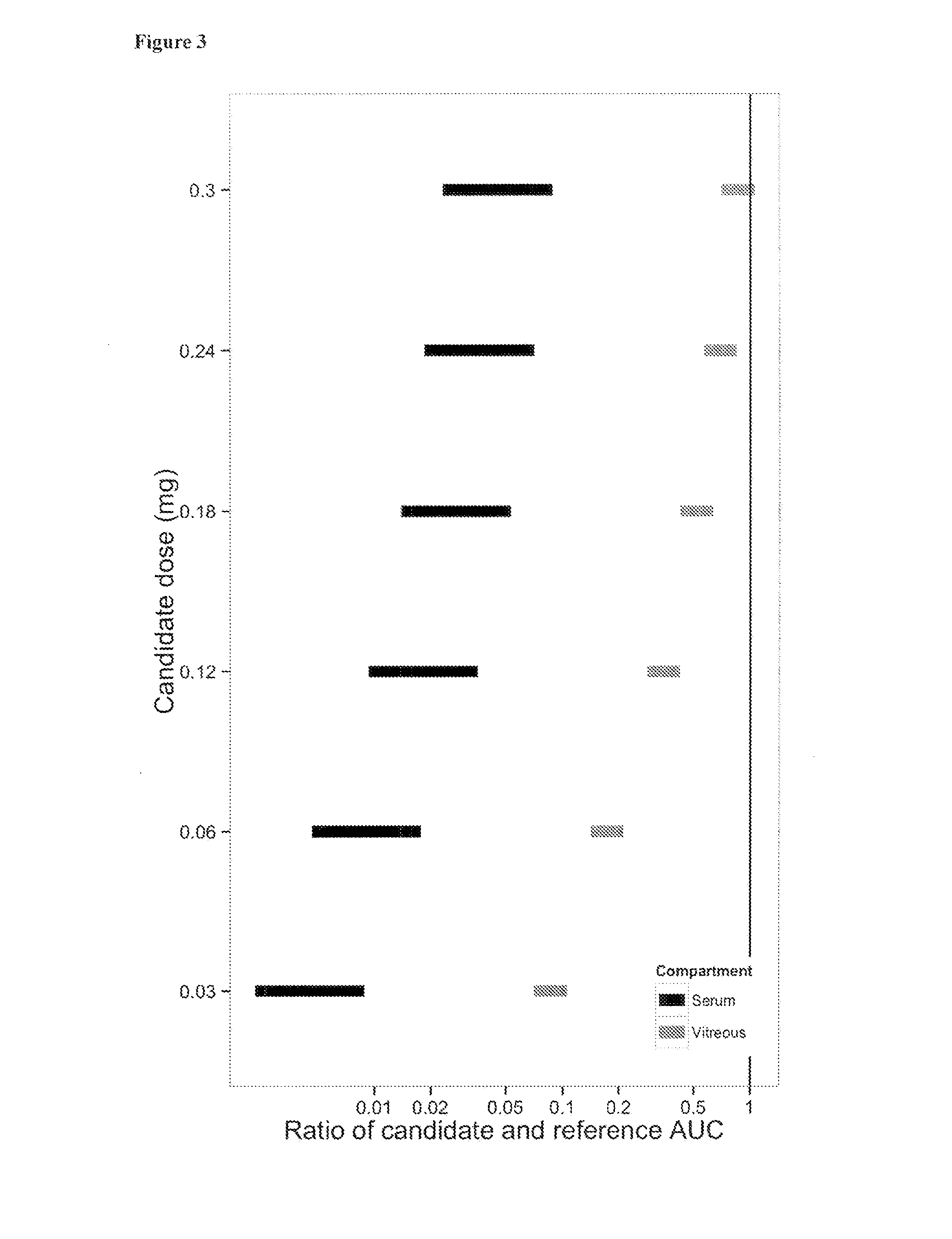Use of a VEGF Antagonist in Treating Retinopathy of Prematurity
a technology of prematurity and vegf, which is applied in the field of infant retinal disorders, can solve the problems of permanent destruction damage to at least part of the peripheral retina, and a leading cause of childhood blindness worldwide, and achieve the effect of stopping abnormal blood vessel growth
- Summary
- Abstract
- Description
- Claims
- Application Information
AI Technical Summary
Benefits of technology
Problems solved by technology
Method used
Image
Examples
example 1
[0066]A Pharmacokinetic Model Jar Predictincr the Ocular and Systemic Exposure to Intravitreally Administered Ranibizumab in Infants
[0067]To model the ocular and systemic exposure to ranibizumab and bevacizumab in infants, two key relationships were established based on published data:[0068]1. A relationship between the age of a child and the vitreous chamber depth and density of the vitreal gel to predict the ocular clearance rate and vitreal concentration;[0069]2. A relationship between age and body weight of a child, and PK parameters of systemic disposition (allometric scaling) to predict the systemic concentration.
[0070]Vitreal concentration of ranibizumab and bevacizumab was calculated using the volume of the vitreous body. It was calculated as the volume of a partial sphere whose height equals the vitreous chamber depth (VCD) and whose diameter equals the axial length (AL) of the eye. The VCD and AL of premature infants at 10 weeks after birth was correlated with the infant b...
example 2
[0075]Ranibizumab Dose Determination for Treating Infants with ROP
[0076]Using the pharmacokinetic model described in Example 1, the predicted ocular and systemic exposure in infants receiving intravitreally administered ranibizumab was compared to the exposure in adults following intravitreal injection of 0.5 mg ranibizumab, since the efficacy and safety profiles for adults at this dose level and mode of administration are known.
[0077]Exposure ratios to ranibizumab were calculated for three different parameters: (i) the maximum concentration (Cmax) in serum, which provides a measure of acute toxicity, (ii) the area under the curve (AUC) in serum, which provides a measure of potential long-term toxicity associated with continual inhibition of systemic VEGF, and (iii) the AUC in the vitreous which provides a measure of efficacy associated with continual inhibition of VEGF in the eye.
[0078]The ratio of predicted exposure in infants to exposure in adults represents a measure of likeliho...
example 3
[0083]Clinical Study to Determine the Effects of Two Different Doses of Intravitreal Ranibizumab in Infants with ROP
[0084]The proposed study will investigate in a 16-week post-injection study period whether (i) ranibizumab offers similar treatment effects in ROP as reported in the BEAT-ROP study for bevacizumab; (ii) lower doses of ranibizumab can achieve similar results in controlling ROP and (iii) if the two doses of ranibizumab differ in their effect on systemic VEGF suppression. This first period is followed by a non-interventional time frame of 5 years during which the treated infants will be assessed twice (at 2 and 5 years) for long-term ophthalmological and pediatric development including targeted examination of VEGF depending organs like heart, lungs, vascular system and brain.
[0085]40 ROP infants requiring treatment according to the current guidelines of the German ophthalmic society for ROP in zone II (stage 1+, 2+, 3+ / − or AP-ROP) or central zone II (stage 3+) will be en...
PUM
| Property | Measurement | Unit |
|---|---|---|
| Fraction | aaaaa | aaaaa |
| Fraction | aaaaa | aaaaa |
| Time | aaaaa | aaaaa |
Abstract
Description
Claims
Application Information
 Login to View More
Login to View More - R&D
- Intellectual Property
- Life Sciences
- Materials
- Tech Scout
- Unparalleled Data Quality
- Higher Quality Content
- 60% Fewer Hallucinations
Browse by: Latest US Patents, China's latest patents, Technical Efficacy Thesaurus, Application Domain, Technology Topic, Popular Technical Reports.
© 2025 PatSnap. All rights reserved.Legal|Privacy policy|Modern Slavery Act Transparency Statement|Sitemap|About US| Contact US: help@patsnap.com



